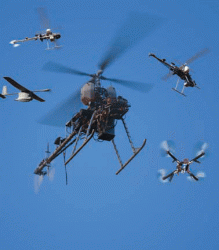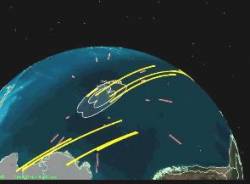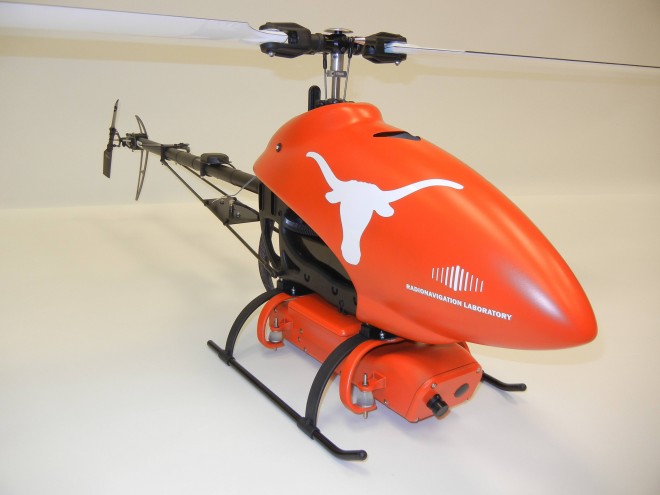
Three state government associations are teaming up with privacy advocates and drone proponents to craft legislation potentially critical to opening the country to the unmanned aircraft industry.
The effort, which is being spearheaded by the Aerospace States Association (ASA), could be instrumental in heading off a potentially devastating backlash against unmanned aerial systems (UAS) fueled by privacy concerns. GNSS technology is a leading candidate for UAS guidance, navigation, and control systems for many types of unmanned aircraft.
Three state government associations are teaming up with privacy advocates and drone proponents to craft legislation potentially critical to opening the country to the unmanned aircraft industry.
The effort, which is being spearheaded by the Aerospace States Association (ASA), could be instrumental in heading off a potentially devastating backlash against unmanned aerial systems (UAS) fueled by privacy concerns. GNSS technology is a leading candidate for UAS guidance, navigation, and control systems for many types of unmanned aircraft.
Privacy issues have been cited as the reason behind a more than half-year delay in efforts to establish new federal rules for the integration of unmanned aerial vehicles (UAVs) into the national airspace. Moreover, more than 30 states have legislation pending to limit unmanned systems — most of it related to worries over privacy, said Charles Huettner, ASA’s executive director.
Five states signed bills into law this year, limiting the use of UAVs for the first time, said Allie Bohm, an advocacy and policy strategist at the American Civil Liberties Union. Florida, Idaho, Montana, and Tennessee have all enacted legislation that requires a probable cause warrant for law enforcement to use a drone for investigations. In addition, Virginia has a new two-year moratorium on drone use by law enforcement agencies, although the legislation allows emergency exceptions, she said.
The cost of moratoriums and other sharp limits could be considerable, experts agree. The Association of Unmanned Vehicle Systems International (AUVSI), one of the participants in the ASA privacy coalition effort, estimated earlier this year that full integration of unmanned aircraft systems would created more than 70,000 new jobs in the United States in the first three years.
The high paying jobs and environmental benefits from UAS “could transform our economy,” said ASA Chairman Alaska Lt. Governor Mead Treadwell in a prepared statement.
“Our members are elected officials; they want the best for their constituents and for their states,” said Huettner, “so we wanted to listen to all sides of the issues and then come up with what would be a reasonable approach to protect privacy and still gain appropriate benefits from these vehicles.”
Focus on State Level
ASA’s effort is noteworthy because its broad inclusiveness. In addition to AUVSI, which is a major trade association for unmanned systems, three important groups are participating that are particularly concerned about privacy protections: the American Civil Liberties Union, the Electronic Privacy Information Center, and the Electronic Frontier Foundation. Also taking part are organizations representing law enforcement — one of the largest potential users of unmanned aircraft: the Airborne Law Enforcement Association, the National Sheriff’s Association (NSA), and the International Association of Chiefs of Police.
The most important participants, however, are likely to be ASA’s primary partners — the Council of State Governments (CSG) and the National Conference of State Legislatures (NCSL).
The ASA is an association of state lieutenant governors, Huettner explained, “so our association sort of represents . . . the executive branch of state government.” CSG represents the senate side of state legislatures and the NCSL, the state houses of representatives. The combined effort suggests that any language the group drafts will reach the lawmakers necessary to transform it into law across the country.
“I’m very excited because I think this has the potential to be a really good distribution mechanism for what I hope will be really good model legislation,” said Bohm.
The results of the collaboration appear likely to be completed in time to influence the shape of rules that the Federal Aviation Administration (FAA) is developing to allow wider operation of unmanned aircraft in the United States. Congress directed the FAA last year to find a way to incorporate UAVs into the civil air space by 2015. The agency has been hammering out the rules, which are now tentatively scheduled to be released October 17 for a four-month comment period.
That is a best estimate, said FAA spokeswoman Alison Duquette. “We’re working toward getting them out by the end of the year.”
ASA, however, already has more than a dozen responses in hand from its group and has a meeting scheduled for June 12 to draft model legislation. The draft is set to go out for comments at the end of June, with a stakeholder meeting in mid-August and a final version sent to the states two weeks later.
“Every state has different privacy laws,” said Huettner. “This may not be one-size-fits-all, but at least they will all be informed on what the deliberative opinion is on this subject. (An opinion) that is impartial and focused on helping the constituents in every state.”





